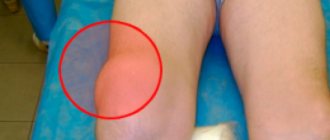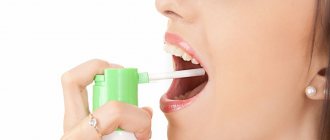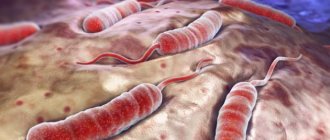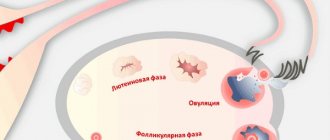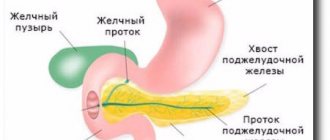Not enough vitamins. This is the cause of various diseases - from harmless but unpleasant peeling of the skin, drowsiness and bad mood, to serious depressive conditions and malfunctions of internal organs. The scientific definition of this phenomenon is vitamin deficiency. Vitamin deficiency is the actual absence of one or more vitamins in the human body or a problem with their absorption. Our review will tell you how to tune the intake and absorption of vitamins: causes, consequences and methods of combating vitamin deficiency.
Signs of vitamin deficiency in children and adults
Catalysts that cause vitamin deficiency of vitamins A, B, C and others are divided into external (food, environmental, etc.) and internal (caused by dysfunction of internal organs).
Among the nutritional prerequisites, the following reasons for the development of vitamin deficiency are distinguished:
- Unbalanced diet.
- Early or incorrect introduction of complementary foods to infants.
- Fasting, strict diets.
- Consumption of poor quality products.
- Irrational heat treatment and improper storage of food.
- The use of medications that block the normal absorption of vitamins by the body.
In addition to food reasons for the appearance of severe vitamin deficiency, there are such external prerequisites for its development as:
- Extreme living conditions (long stay in cold/hot latitudes, high in the mountains).
- Severe or prolonged stressful conditions.
- Alcohol abuse, nicotine and drug addiction.
- Living in unfavorable environmental conditions.
- Excessive physical activity.
It is also necessary to mention internal prerequisites caused by diseases and disorders of the internal organs. These include:
- Deviations in the functioning of the digestive tract.
- Insufficient level of development of the gastrointestinal tract (in children).
- Disorders of the endocrine system.
- Weak defenses of the body.
- Malfunctions in the vitamin absorption system. They manifest themselves in disruption of transport and enzymatic functions, permeability of cell walls, as well as deviations in the metabolism of vitamins.
- The presence of parasites in the body.
- Dysbacteriosis.
- Liver and kidney diseases.
Vitamin deficiency: symptoms
Depending on which vitamin the body lacks, the signs of vitamin deficiency can vary greatly. Below is a list of symptoms that occur with a lack of vitamins A, B, C, D, E, PP, K.
- Vitamin deficiency on the skin manifests itself in the form of such conditions as: dryness, itching, burning, hyperpigmentation, increased skin pattern, decreased elasticity, the appearance of spider veins, rashes in the form of acne and pimples, the formation of small weeping erosions, dry scales and microcracks, the appearance stretch marks and wrinkles. In some cases, the top layer of skin may peel off.
- From the digestive system, there is a decrease in appetite, diarrhea or constipation, weight loss, and vomiting.
- On the part of the oral cavity, bleeding gums, thinning of tooth enamel, increased sensitivity of teeth to hot, cold, sweet, and sour foods, slowed tooth growth in children, and tooth loss in adults may occur.
- In hair and nails, fragility, separation, yellowing and deformation of the nail plates, and hair loss are observed.
- Muscle cramps can be diagnosed.
- From the circulatory system: the appearance of bruises, bleeding gums, hemorrhage into blood vessels.
- From the organs of vision: “night blindness”, decreased visual acuity, feeling of sand under the eyelids.
- From the musculoskeletal system: fragility of bones, pain in joints and bones, disorders of the development of the musculoskeletal system in children.
- General condition of the body: chronic fatigue syndrome, weakness, drowsiness, irritability, apathy, depression, dizziness, sleep disturbances, headaches, mood swings.
The ways in which vitamin deficiency manifests itself may vary. Therefore, to establish an accurate diagnosis, you need to consult a doctor.
What does it “look” like overall?
External signs of vitamin deficiency are deterioration in skin quality, poor condition of nails and hair, the presence of rashes, acne, and ulcers. The fragility of capillaries increases, as a result of which subcutaneous hemorrhages (hematomas) occur without visible injury.
Psycho-emotional disorders occur: a person becomes impulsive, irritable, or vice versa – becomes drowsy and may experience chronic fatigue. Very often sleep and appetite are disturbed. A patient with vitamin deficiency looks older than his age.
Vitamin deficiency in children
Children suffer from a lack or absence of vitamins in the body more often than adults. This is due to their fragile immune system and insufficient development of the gastrointestinal tract.
The state of vitamin deficiency can lead to a number of serious diseases, such as rickets and ichthyosis. Therefore, when the first signs of vitamin deficiency appear (with vitamin deficiency in the hair, vitamin deficiency on the fingers, lips or feet), urgently take the child for a consultation with a pediatrician.
Vitamin deficiency in women during pregnancy
During pregnancy, the mother's body places additional stress. To make it easier to endure pregnancy, as well as to provide the baby with the necessary vitamins, the expectant mother should carefully monitor her diet. Only a doctor can correct it and supplement it with the necessary vitamins. Doing this on your own is prohibited, since some vitamins cannot be taken during a certain trimester of pregnancy.
Herbal infusions
Among traditional medicine there are effective recipes with herbal infusions:
- You will need leaves of black currant, nettle, raspberry, mint, elderberry flowers, rowan fruits, oregano herb, coltsfoot (1 tsp each). Pour boiling water (1 glass) over everything, leave in a thermos, and filter. You need to take ¼ cup half an hour before meals 3 times a day.
- You need a mixture of rose hips and rowan fruits. You need to pour boiling water (1 cup). After infusing in a thermos, the product is filtered and taken ½ cup 3 times a day.
- Rose hips, lingonberries, nettle leaves (2 tablespoons each) are brewed with boiling water (1 glass), placed in a water bath for ¼ hour. Then it is infused for an hour and filtered. You should take the product 3 times a day, a glass.
Types of vitamin deficiency in the body
The most common types of the disease:
- Vitamin A deficiency. The main indicators of a lack of this vitamin are blurred vision, anemia and symptoms of vitamin deficiency on the skin (dryness and flaking). Treatment requires dietary adjustments: inclusion of fish oil, fatty sour cream, vegetable oils, carrots, sea buckthorn, and spinach in the diet.
- Vitamin D deficiency. This vitamin is generated by exposure to sunlight. Its deficiency in the body manifests itself through increased sweating, constipation, pathology of the musculoskeletal system, irritability, and problems with normal sleep. Nutrition for vitamin D deficiency should be enriched with meat, fish, fish oil, liver, and chicken eggs.
- Lack of vitamin E. Characterized by nervous disorders, fragility of blood vessels, impaired reproductive function and dry skin. The diet should include vegetable oils, nuts, seeds, meat, eggs, and milk.
- Absence or deficiency of vitamin C. Manifests itself in the form of bleeding gums, swelling of the lower extremities, anemia, white coating on the tongue, weakness, dizziness. It is necessary to eat rose hips or a decoction of them, citrus fruits, sorrel, bell pepper, and rowan.
- Lack of vitamin K. Its symptom is bleeding and hemorrhage. You should include beef liver, spinach, and Brussels sprouts in your diet.
- Vitamin deficiency of B vitamins. A deficiency of one of the vitamins of this family - B1, B6, B12, B9 - leads to headaches, memory disorders, convulsions, insomnia, stomatitis, coordination problems, depression, tachycardia, and pathology of the hematopoietic system. The emphasis in the diet should be on eggs, liver, legumes, bananas, cheese, fresh vegetables, bread.
- Vitamin P deficiency. The main symptom is hemorrhages in the skin and mucous membranes. You should add rose hips, green tea, and citrus fruits to your diet.
Frequent fractures
If a person has developed a calcium deficiency, he may gradually develop osteopenia.
This is a condition in which bone mass is gradually lost, sparseness (decreased density), bone fragility (osteoporosis) occurs, which threatens fractures. Bones reach maximum strength and strength between the ages of 20 and 30. From this point on, they begin to slowly lose density due to calcium consumption and age-related metabolic changes. That's why it's important to get enough calcium, along with exercise to maintain bone strength and weight loss, such as walking and aerobics. Signs of calcium deficiency may include dental problems, hypertension, digestive disorders, and muscle cramps. Premenopausal men and women need 1000 mg per day, and postmenopausal women need 1200 mg calcium. The best food sources high in calcium are dairy products (yogurt, milk and cheese) and tofu. Greens, cabbage, turnips, and other vegetables also contain calcium, although it is more difficult for your body to absorb it. In many cases, doctors recommend taking calcium supplements. And they are better absorbed together with phosphorus and vitamin D.
Vitamin deficiency: treatment
If the deficiency is minor, your doctor may prescribe medications orally. If there is a pronounced deficiency of a particular vitamin, intramuscular injections will be required. Physiotherapeutic procedures may also be required (for vitamin D deficiency).
For vitamin deficiency, not only medication, but also folk treatment helps: a decoction of rose hips, rowan, and viburnum. In addition, you can prepare a vitamin mixture from ground nuts, dried apricots, prunes, lemon, raisins and honey.
The benefits of pharmacy vitamins
If you do develop vitamin deficiency, your doctor will tell you what vitamins to take to combat it. In the form of tablets and powders, vitamin complexes are prescribed for the purpose of prevention or for mild forms of the disease. A severe degree of vitamin deficiency requires vitamin infusions. This is done using intramuscular injections (sometimes very painful), less often - intravenously using a dropper.
Pharmacy multivitamins are well balanced and enclosed in capsules, the components of which have different absorption times - this is necessary so that there is absorption time for incompatible elements.
The most beneficial time to take vitamin supplements is considered to be the very early morning - you get a boost of energy and benefits for the whole day, wake up better, and become more energetic.
Remember: treatment should only be prescribed by a qualified specialist.
Prevention of vitamin deficiency
To protect yourself from seasonal vitamin deficiency, a balanced diet is recommended. Avoid overly strict diets and fasting, as only a rational approach to diet planning will help protect against vitamin deficiency in the body. Eat as many fruits, berries and vegetables as possible, do not forget about vegetable oils and foods of animal origin.
In winter and spring, when vitamins are scarce, it is recommended to sprout wheat, oats, green buckwheat, and lentils at home: green sprouts help replenish the lack of vitamins and prevent vitamin deficiency.
Clinical researches
A clinical study conducted jointly with the Union of Pediatricians of Russia proves the high efficiency, safety and tolerability of products for daily skin care of children with mild and moderate forms of atopic dermatitis and during remission, accompanied by a decrease in the quality of life of patients. As a result of therapy, the following effects of the La-Cri cleansing gel were noted:
- Gentle skin cleansing;
- Relieving redness and itching;
- Skin restoration;
- Skin nutrition.
Consumer Reviews
Lacrimosa7002 (otzovik.com)
“Literally for a couple of months I didn’t know about this La-Cri cream for dry skin. It all started when the pads on my sister’s fingers began to burst and peel a little, and the skin was peeled off in a thin film. There was no burning or itching. We immediately went to the dermatologist, my sister was in a panic: save me, help me)) The doctor was a sweet old man, like from a Soviet movie, he said: honey, we’ll help, we’ll save your hand with a kiss:)) Everything turned out to be tritely simple - vitamin deficiency. I can only wonder where it comes from, there are always fresh fruits and vegetables at home, no one in the family takes tablet vitamins.
The doctor ordered me to buy La Cree Cream for dry skin at the pharmacy and assured me that everything would be fine in a couple of days. That's how it happened))
And I really liked the cream. Dad especially liked him. He has never worn and does not wear gloves in his life, you will laugh, but he says: I can’t breathe)) Coming home after long parties with Jessica, dad began to smear his hands with this cream. The skin literally immediately becomes soft, redness and roughness are removed. Well, now about the miracle cream. Sold only in pharmacies. It does not contain fragrances or dyes, but at the same time it has a very pleasant aroma, which is present due to oils and other natural ingredients. Eliminates... Preserves... Protects...
The cream can be used for children from birth, which means that the conclusion is that it is hypoallergenic. The tube is in a cardboard box, on which everything is described in great detail, accessible, understandable and in simple language, without veiled phrases.
As for the method of application, it’s still more individual, depending on what problem you have. My sister didn’t smear her entire hands, but only her fingertips, she smeared it for three days, about 4-5 times, but very little by little, and indeed after three days the skin was as good as new. To prevent and moisturize/nourish the skin, she smeared it for another five days, but only at night before bed.
Dad also rubs his hands when he has to. In severe frosts it happened twice a day, but now I don’t use it until the thaw. I also tried the cream several times after cleaning, it’s very cool!…
...The box is simply a treasure trove of information.
The active components in the composition are described in percentages; it is rare to see such a detailed description. And after the composition, the components themselves, their qualities and effects on the skin are described. Excellent presentation of information, hats off to the manufacturer.
The only one. But a fairly significant disadvantage is the cost of this cream. The volume is 50 ml, and the price is 240 rubles. The date of manufacture is on the weld seam, the shelf life is 2 years. The tube is made of soft plastic, designed identically to the box. This is already the second tube, the first one ran out in a couple of weeks, and was actively used by the whole family. The information is partially duplicated (as much as there is enough space). The font is small, but easy to read.
The box contains large instructions with detailed descriptions of use for various problems.
I won’t even try to add a photo, since everything is mercilessly removed and cut out, while you look at others, so half of the review is just photos of instructions, like, the sword of Damocles didn’t get there... The usual screw-on lid, the hole is closed with a foil membrane.
The hole is small, convenient, if you consider that the cream is thick, then everything is fine. The texture is dense and oily. The aroma is very interesting, I smell the smell of mown grass and wildflowers, although there is no trace of them there, and I am also very glad that the cream does not have a characteristic pharmacy smell. This cream can be applied to any area of the skin, including the face. Despite the consistency and texture, consumption will be economical. When the cream gets on the skin, it seems to melt a little and smear perfectly, while all its fatness is felt, but at first glance it seems terrible, I’m all covered in oil :))
With such oil content, the cream is definitely not suitable for those with oily skin, but this only applies to the face, you will look like an oily pancake))
After using this cream, the skin is transformed before your eyes, it is soft, perfectly moisturized and receives sufficient nutrition.
The only downside I can mention is the cost, it’s still a bit expensive.
Everything else suits me 100%:
- can be used at any age and for any part of the body (including the face)
- good composition
- excellent properties of the cream
- quick solution to problems (in the specific case of vitamin deficiency)
- nice smell
- economical consumption.
I give it a definite 5 points and I would advise you to pay attention to this La-Cri cream if you have problems that are listed in the indications for the use of this cream.
Health and good mood to everyone!”
Leli4na (irecommend.ru)
"8 in 1! A composition that includes all the creams that I used separately! Use experience: a week or more. A miracle remedy for all irritations, redness and dermatoses (not in the acute phase. The color is interesting, the smell is specific, the feeling is a fairy tale!
B is for children, and, accordingly, for adults. Excellent composition (see photo), the result is obvious! (And on the body, too)! Perfectly moisturizes the skin, it becomes soft and velvety; The cream is perfectly absorbed without leaving behind a sticky, greasy layer. True, because of the smell, I personally only apply it at night. Before that I used panthenol, then I switched to a more budget-friendly version - dexpanthenol, and then I dabbled in calendula cream.
Conclusion: a little bit of everything, but priorities must be set. La-Cree is in the forefront!
Sources:
- B.A. Shamov, I.G. Safiullina, A.B. Beshimova, T.B. Shamov, Differential diagnosis of atopic dermatitis, journal of Practical Medicine, 2011 https://cyberleninka.ru/article/v/differentsialnaya-diagnostika-atopicheskogo-dermatita
- Fokina R.A., Atopic dermatitis: stages of development of classification forms, Siberian Medical Journal, 2007 https://cyberleninka.ru/article/v/atopicheskiy-dermatit-etapy-razvitiya-klassifikatsionnyh-form
- A.N. Pampura, A.A. Chuslyaeva, Modern approaches to the treatment of atopic dermatitis in children https://cyberleninka.ru/article/v/sovremennye-podhody-k-terapii-atopicheskogo-dermatita-u-detey
Photos of vitamin deficiency
You can see photos of vitamin deficiency on our website.
Diagnostics
Differential diagnosis is necessary, since deficiencies of some vitamins give symptoms similar to the clinical picture of the disease.
To do this, you first need to collect an anamnesis at the initial appointment: interview the patient, find out what he eats, what his lifestyle is, etc. This is necessary to understand how many vitamins a person consumes with everyday food. Questions regarding lifestyle will help you avoid making mistakes when making a primary diagnosis. For example, if a patient does not wear a hat in winter, then the hair will split and fall out from the cold. And working outside in cold weather leads to the fact that wind and frost damage the skin of the hands and face, although a person can be fully provided with vitamins.
After the interview, a physical examination is carried out - palpation, the condition of the mucous membranes (including the oral cavity for ulcers on the mucous membrane and plaque on the tongue) and the person is necessarily sent for tests. This is necessary to exclude hepatitis, diabetes, gastrointestinal pathologies, autoimmune diseases and other diseases. The most accurate picture will be provided by a blood plasma analysis. In addition, if a person is subsequently prescribed vitamins, it is advisable to do a liver test.
